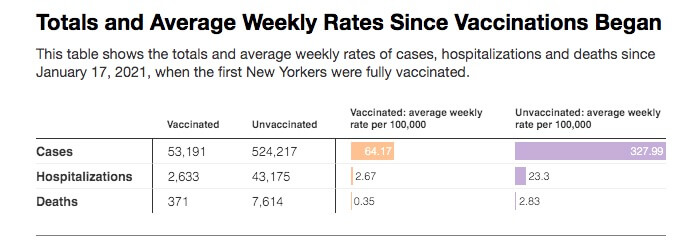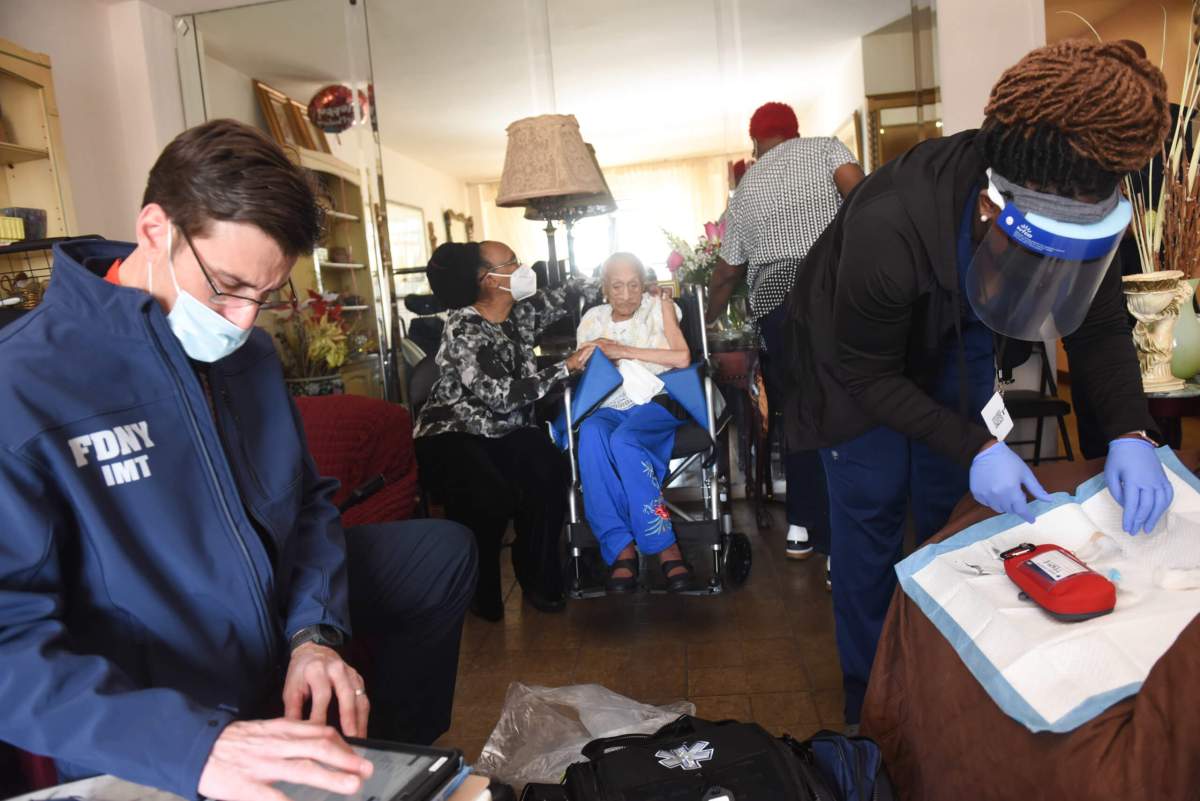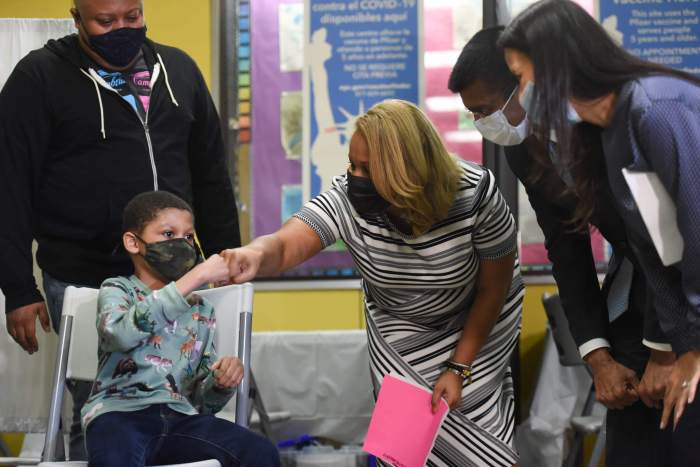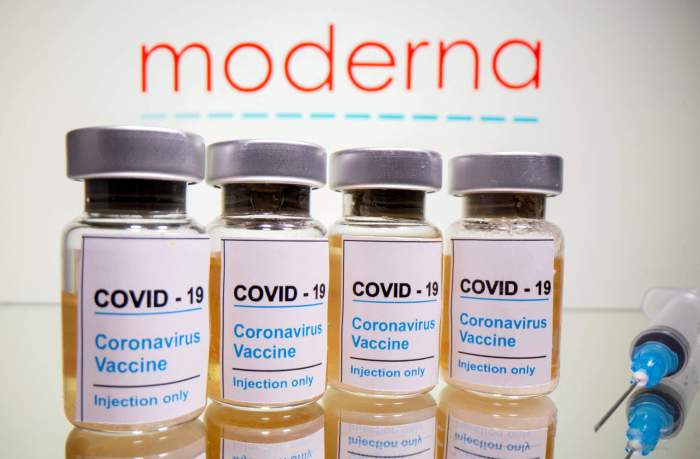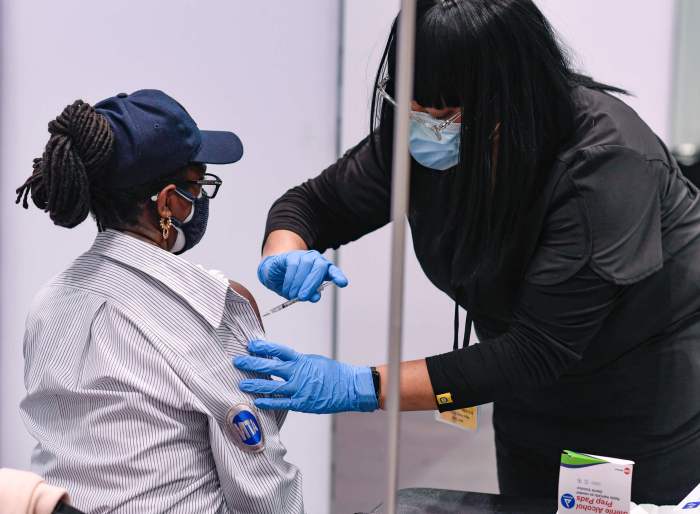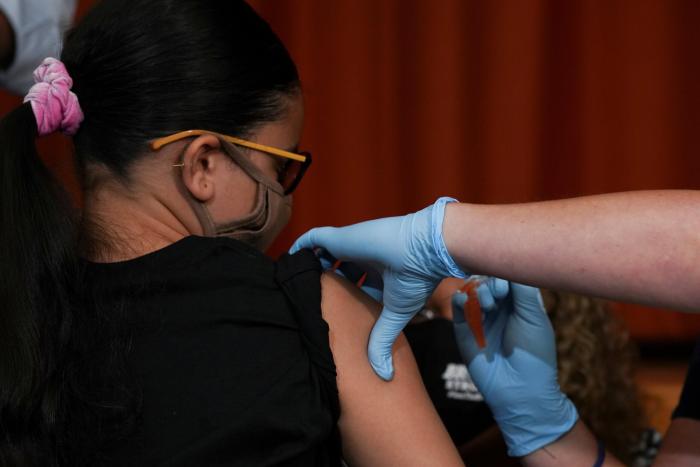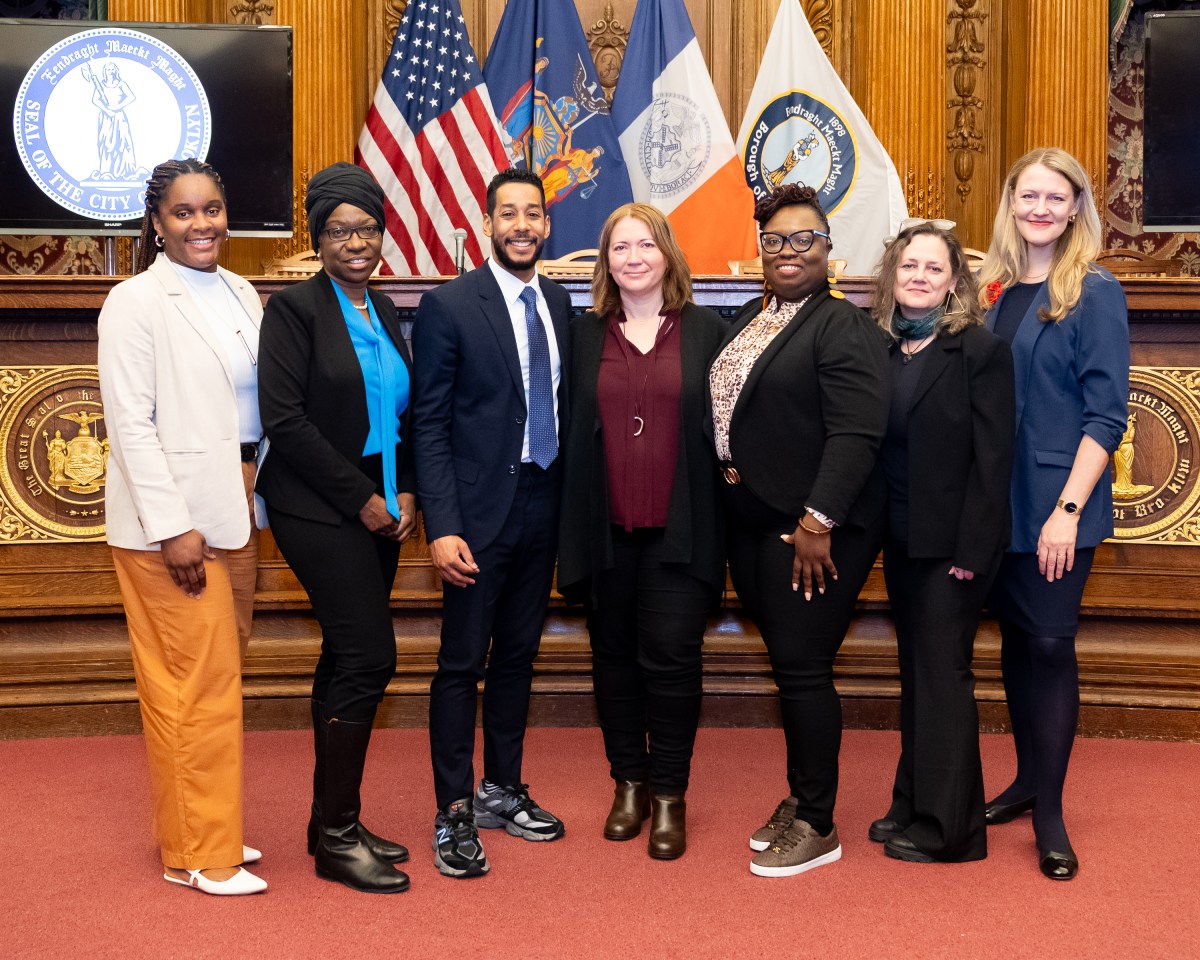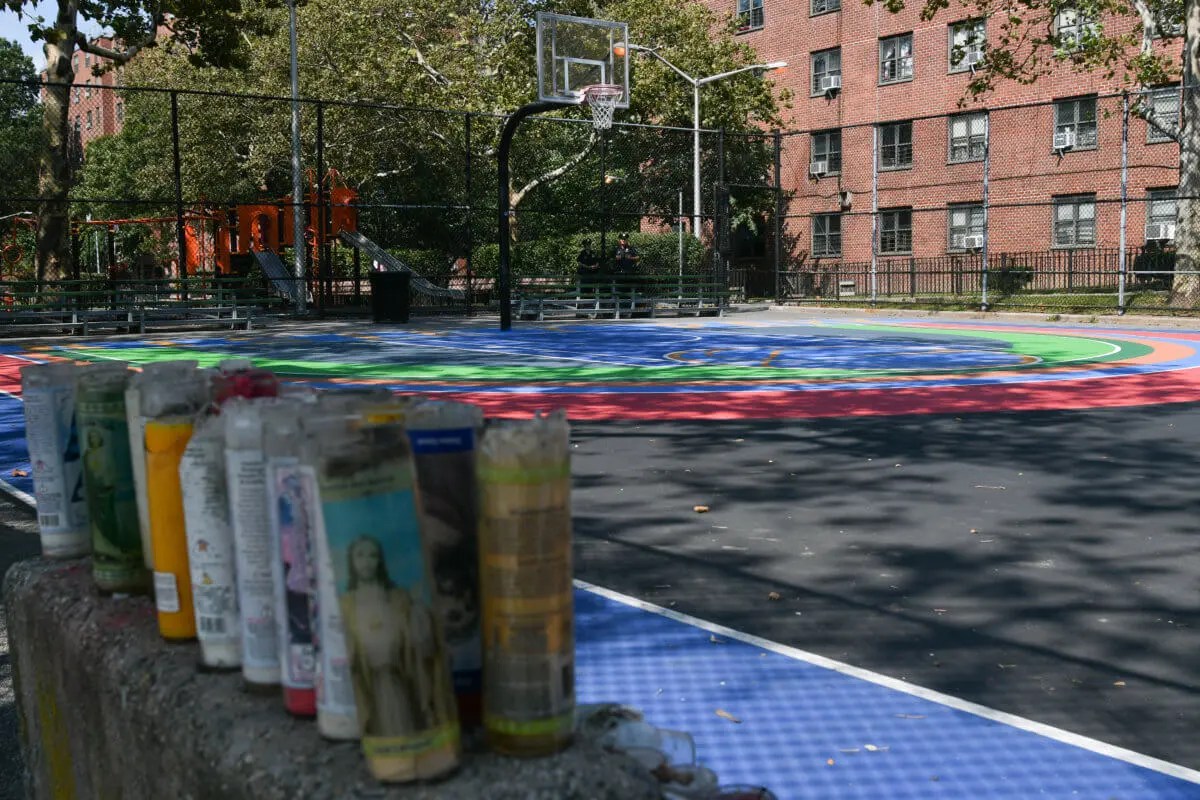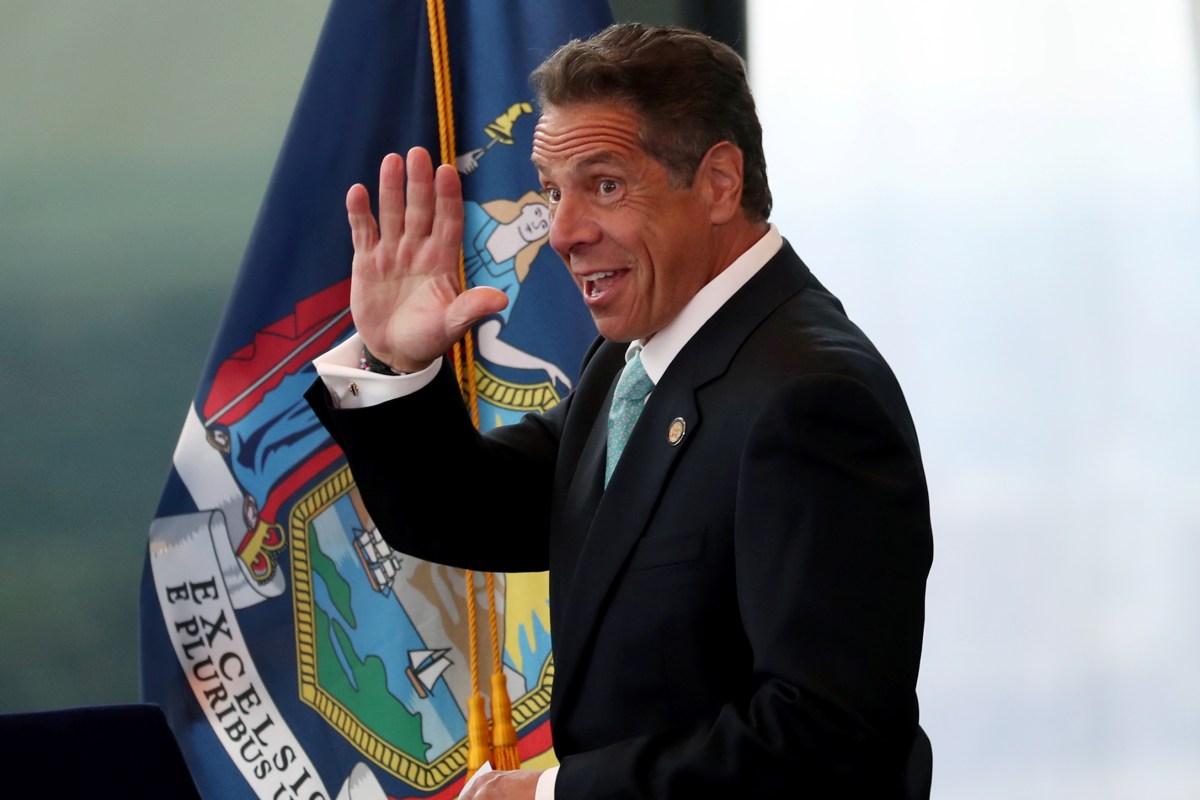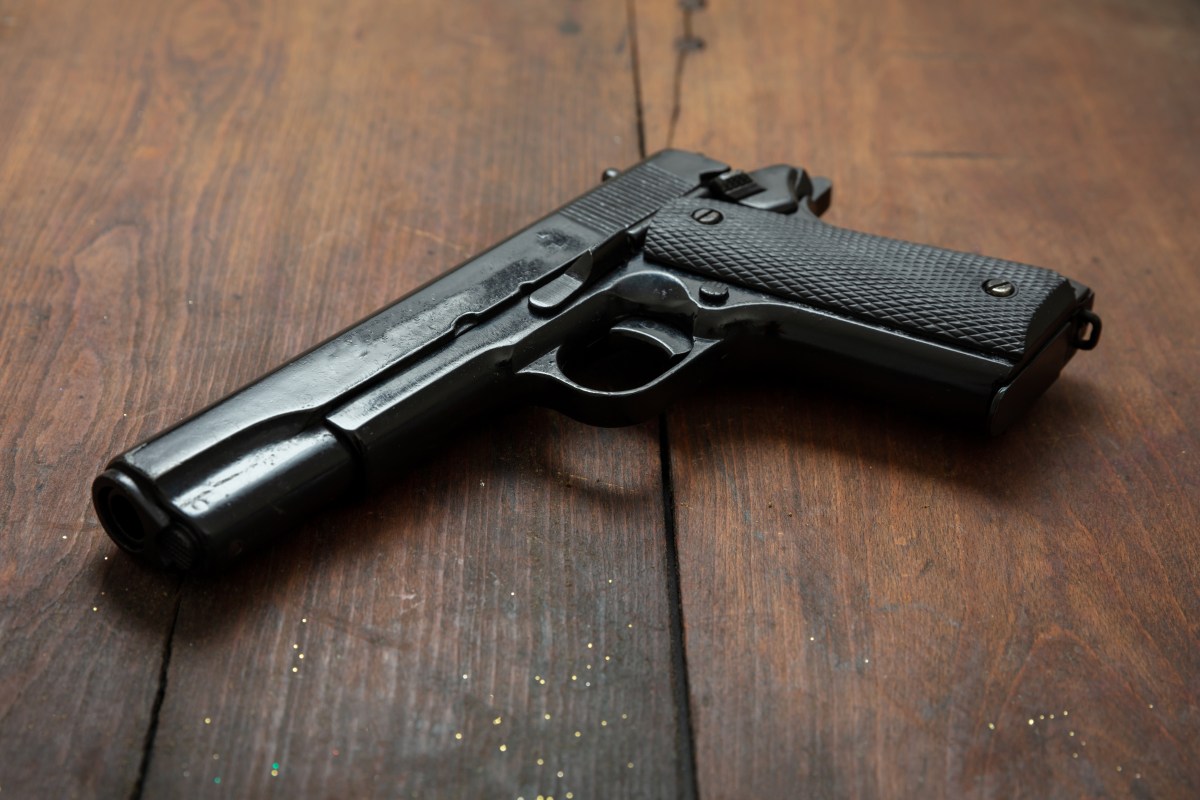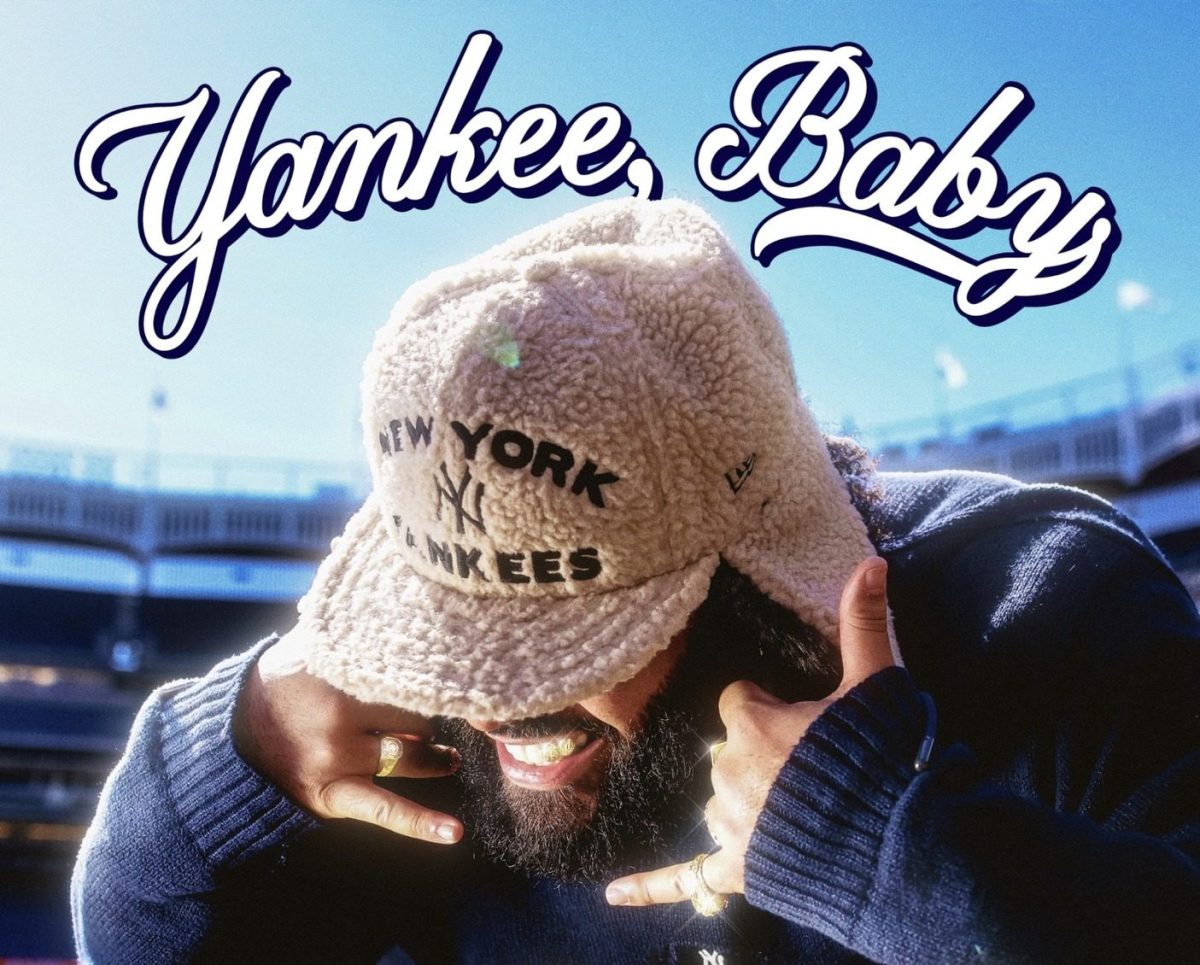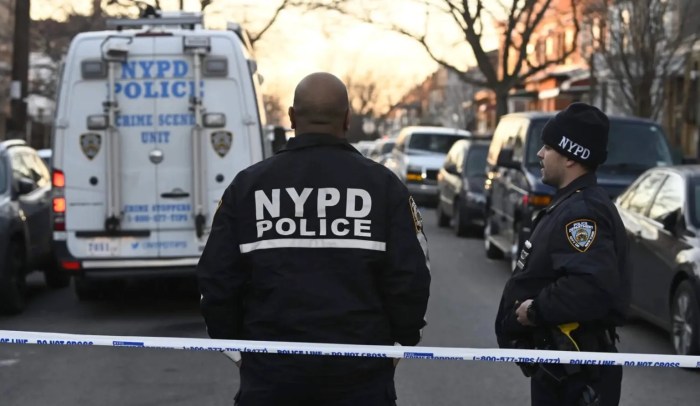Much like last fall’s pre-holiday surge, COVID-19 cases are beginning to rise again across New York City — but the story this time is much different, thanks to the vaccination effort.
Transmission of COVID-19 is increasing once again, with 82.81 cases per 100,000 residents citywide as of Nov. 14. The 7-day positivity rate, as of Nov. 12, had also increased to 1.68%, up from the 1.46% rate reported on Nov. 5.
But the number of people hospitalized with COVID-19 continues to decline. As of Nov. 9, the city reported a 7-day average number of hospitalizations of just 20; a month earlier, on Oct. 9, that 7-day average was 62.
Deaths from COVID-19 have also dropped, from a 7-day average of 12 deaths on Oct. 9 to just 6 deaths on Nov. 9 — a 50% reduction in the average in a month’s time.
None of this is by chance. Almost three-quarters of all New Yorkers have received at least the first dose of the COVID-19 vaccine, the city’s Health Department reported on Nov. 14.
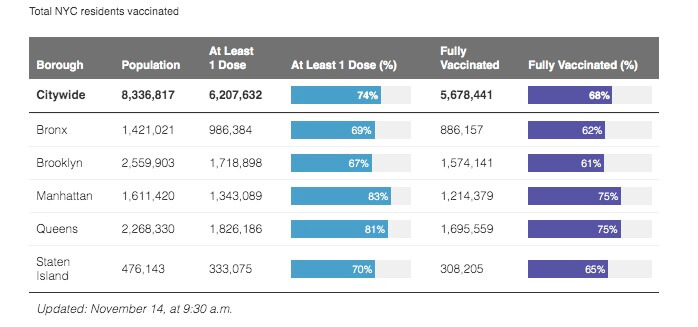
With more New Yorkers getting vaccinated, they are better able to fight off the virus or reduce the severity of its symptoms if infected. Uses of monoclonal antibodies, among those infected with COVID-19 who are at higher risk of severe illness, have also helped treat patients and prevent serious, life-threatening outcomes.
Still, there are plenty of new COVID-19 hotspots across the Five Boroughs. Seven areas reported a 7-day positivity rate of over 3% between Nov. 3-9, including Belle Harbor/Neponsit/Rockaway Park, Queens (ZIP code 11694), which led the city with a 4.13% rate. However, just 21 new cases were reported there.
Two other areas of Queens also had 7-day positivity rates above 3% during the period: Edgemere/Far Rockaway (11691, 3.67%, 69 new cases) and Bayside (11360, 3.42%, 17 new cases).
Three Staten Island communities also exceeded 3% positivity between Nov. 3-9. The city’s Health Department reported that The Rock continues to have the highest transmission rate of all Five Boroughs, at 107.95 cases per 100,000 residents.
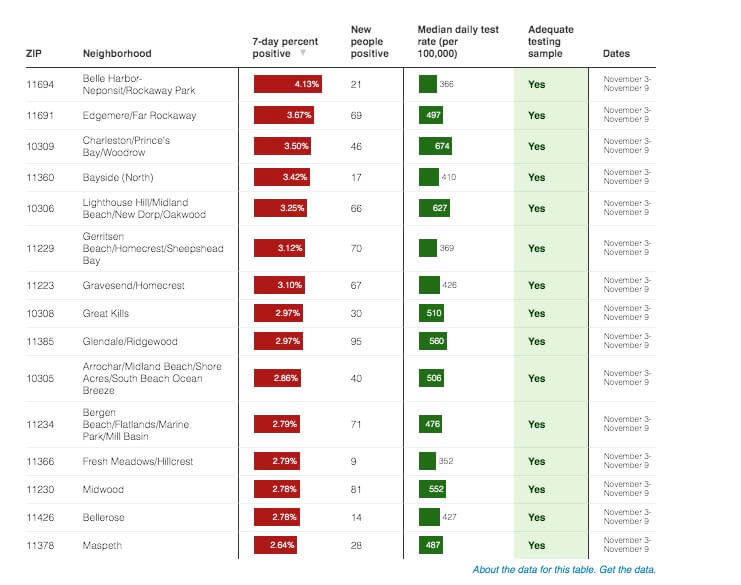
East Williamsburg/Williamsburg, Brooklyn (11211) had the highest number of new infections reported between Nov. 3-9, at 129 cases. Five other areas exceeded 70 new cases during the period, three of which are in Brooklyn: Midwood (11230, 81 new cases); Bergen Beach/Flatlands/Marine Park/Mill Basin (11234, 71 new cases); and Gerritsen Beach/Homecrest/Sheepshead Bay (11229, 70 new cases).
The Ridgewood/Glendale area of Queens (11385) had the second-most new COVID-19 cases during the week, at 95.
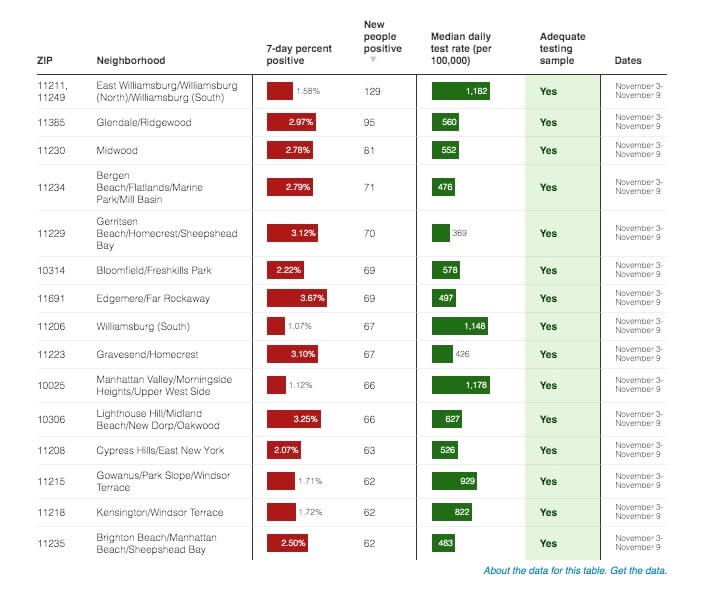
As far as vaccinations go, while nearly 75% of all residents have received at least the first dose, vaccine refusal or hesitancy remains robust in a number of neighborhoods.
Twelve communities continue to have less than 60% of its population having received at least the first dose of the COVID-19 shot. Borough Park, Brooklyn is the only community in the city where both the first dose rate (49%) and fully vaccinated rate (45%) remain below 50%.
Edgemere/Far Rockaway, Queens, which had the second-highest 7-day positivity rate between Nov. 3-9, has the second-worst first-dose (53%) and fully vaccinated (47%) rates in the Five Boroughs.
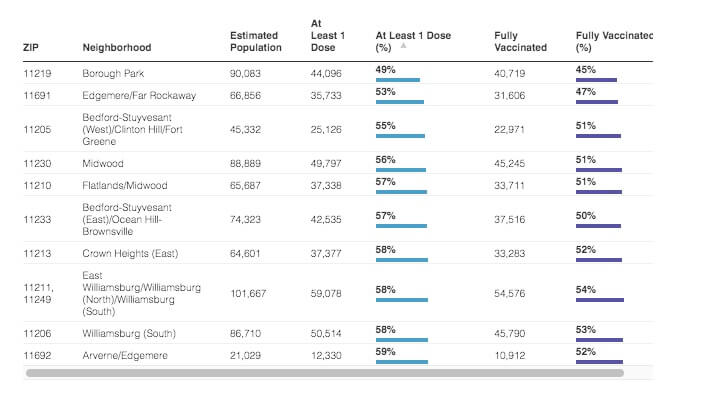
Again, it’s worth noting that since vaccines became widely available across New York City in January 2021, the number of people infected with COVID-19 has been disproportionately higher for unvaccinated New Yorkers.
